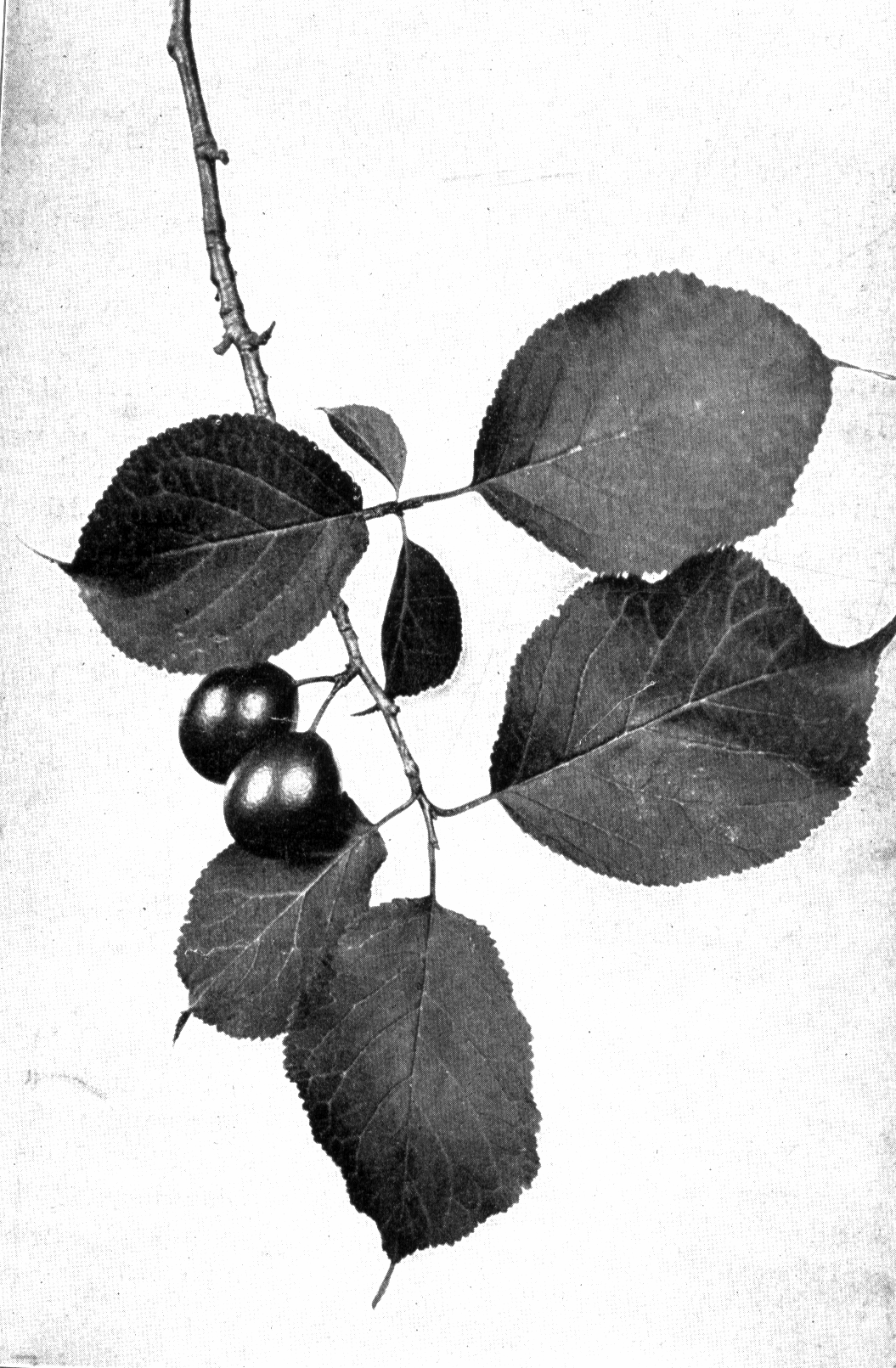- Prunus nigra
image_caption = fruiting spray
regnum =Plant ae
divisio = Magnoliophyta
classis = Magnoliopsida
ordo =Rosales
familia =Rosaceae
subfamilia =Prunoideae
genus = "Prunus "
subgenus = "Prunus"
sectio = "Prunocerasus"
species = "P. nigra"
binomial = "Prunus nigra"
binomial_authority = Aiton"Prunus nigra" (Canada Plum or Black Plum) is a species of "
Prunus ", native to easternNorth America fromNew Brunswick west to southeasternManitoba , and south toConnecticut across toIowa .Germplasm Resources Information Network: [http://www.ars-grin.gov/cgi-bin/npgs/html/taxon.pl?30053 "Prunus nigra"] ] It formerly also occurred south toOhio but is now thought to be extinct in that state.Ohio DNR: [http://www.dnr.state.oh.us/tabid/1507/default.aspx "Prunus nigra" Aiton Canada Plum] ]It is a
deciduous shrub or smalltree growing to 10 m tall with a trunk up to 25 cm diameter, with a low-branched, dense crown of stiff, rigid, branches. Thebark is gray-brown, older layers coming off in thick plates. The branchlets are bright green at first, later become dark brown tinged with red, and spiny. The winter buds are chestnut brown, acuminate, up to 8 mm long. The leaves are alternate, simple, oblong-ovate or obovate, 5–12 cm long and 3–7 cm broad, wedge-shaped or slightly heart-shaped or rounded at base, doubly crenaulate-serrate, abruptly contracted to a narrow point at the apex, feather-veined, midrib conspicuous; they emerge from the bud convolute, downy, slightly tinged with red, are smooth, becoming bright green above and paler beneath when full grown. The leaf petioles are stout, bearing two large dark glands and early deciduous, lanceolate or three to five-lobed stipules. Theflower s are 15–25 mm diameter, with five rounded petals, white fading to pale pink, with a more or less erose margin; they are slightly fragrant, borne in three to four-flowered umbels, with short, thick peduncles, and appear before the leaves in mid to late spring. The flower pedicels are slender and dark red. The calyx is conic, dark red, five-lobed, the lobes acute, finally reflexed, glandular, smooth on the innner surface, imbricate in bud, ovate, with short claws, imbricate in bud. There are 15–20 stamens, inserted on the calyx tube; filaments thread-like; anthers purplish, introrse, two-celled; cells opening longitudinally; the pistil has a superior ovary in the bottom of calyx tube, one-celled, with two ovules. Thefruit is an oblong-ovaldrupe , 25–30 mm long with a tough, thick, orange red skin, free from bloom, yellow flesh adherent to the stone; the stone oval, compressed. It matures in late summer or early autumn. Thecotyledon s are thick and fleshy. The species grows best in alluvial soils.New Brunswick tree and shrub species of concern: [http://cfs.nrcan.gc.ca/subsite/mx-212/canadaplum "Prunus nigra"] ] Keeler, H. L. (1900) "Our Native Trees and How to Identify Them" pp. 119-122. Charles Scriber's Sons, New York.]It can easily be confused with the related "
Prunus americana ", differing most obviously in the leaf margins having blunt, gland-tipped teeth, rather than the sharp, glandless teeth of "P. americana" leaves.A fungus in the genus "
Taphrina " often attacks the plums; the young ovaries swell, often much larger than full grown plums, become hollow and often persist on the tree in winter. Known as "plum pockets", they appear pale green, leathery to the touch, and hollow with the exception of a few fibrous bands. The disease reduces regeneration of the plums.Uses
The fruit is eaten raw or cooked and is made into
preserve s and jellies.The
wood is bright red brown; heavy, hard, strong and close-grained, with a density of 0.6918.References
Wikimedia Foundation. 2010.

